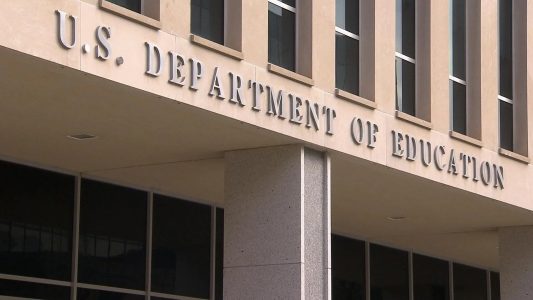Widgetized Section
Go to Admin » Appearance » Widgets » and move Gabfire Widget: Social into that MastheadOverlay zone
Is This the End of the Department of Education?
The views expressed are those of the author and do not necessarily reflect the views of ASPA as an organization.
By Nicholas Kandrac
March 31, 2025

President Donald Trump officially signed an Executive Order on March 20th, 2025, which will begin the dismantling of the Department of Education. With this executive order the President has begun to set a plan to shut down the 46-year-old government agency. The Department of Education had started in 1979 with Jimmy Carter signing into law the Department of Education Organization Act. This law was to address the nations educational challenges and to ensure equal opportunities for everyone. Trump’s executive order cannot close the department completely because the President would need Congressional approval for that to happen. The executive order wants the Department of Education Secretary Linda McMahon to take the necessary steps to make sure the closure of The Department of Education takes place. Also, in the order Trump wants to see the authority returned to the States and local communities to make sure all services, programs and benefits are available.
President Trump had said at the signing that the Federal Pell Grants that are given as a form of financial aid will still be available in full. The same would go for the funding for children with disabilities but they would be redistributed to other agencies and departments. The Department of Education oversees federal student loans, civil rights enforcement in schools and they are responsible for billions of dollars that get distributed to help children in poverty and disabled. One of the main things that the executive order did state is that the Department of Education will not be handling federal student loans anymore. President Trump has stated that he wants federal student loans to be handled by the Small Business Administration. What will happen to repayment options such Income-Based Repayment (IBR) or Pay As You Earn Repayment (PAYE)? It will be up to the SBA on how they want to handle the programs already in place. The Department of Education funds about $15 billion to Title I schools which involve schools that receive federal funds for low-income families. The Individuals with Disabilities Education Act (IDEA) receive grants and federal funding that are given to the states to make sure children that have disabilities receive a free public education. The President said that programs and funds involving children with disabilities will be handled by the Department of Health and Human Services.
The Small Business Administration had said it would be cutting their staff down by about 43 percent which would be a massive undertaking to take on the $1.6 billion student loan debt the U.S. currently has. With the President saying in the executive order that the student debt portfolio was too large for the Department of Education to handle it could quite possibly be an even larger burden to handle for the SBA with their staffing cuts as well. The Department of Education had cut about half of their employee’s days before the executive order was signed. Linda McMahon has said that she plans to relocate a lot of the departments core operations and distribute them to other federal agencies. She had mentioned that this plan would not happen overnight, but she plans on paving the way for these changes to happen.
A House bill that was introduced back in January 2025 by Representative David Rouzer who is a Republican from North Carolina stated that Department of Education’s responsibilities be transferred to other agencies. As an example, the student loan debt portfolio would go to the U.S. Treasury Department and job training programs to the Department of Labor. The bill also proposes that the government be allowed to provide nearly all educational funding to the states without any kind of reporting requirements. To get that funding the Department of Education wanted to see if the states were meeting certain standards before getting any type of funding for their schools. Another plan that was introduced in February by the Manhattan Institute for Policy Research stated they wanted to see the civil rights enforcement issues in public schools be transferred to the Civil Rights Division of the U.S. Department of Justice. Conservative education policy advocates have pushed for funding it gives to K-12 schools in states in the form of block grants which is a form of funding that does not have as many rules and federal oversight. Public education advocates have said this can allow red states to fund private schools which do not follow federal education civil rights laws.
With President Trump’s Executive Order there will be a lot of changes that will be proposed and voted upon. Student loan debt and other federal funding that are given to the states will be the big hurdles that Education Secretary Linda McMahon will have to plan out. These plans will happen overtime, and the results will have an impact down the line.
Author: My name is Nicholas Kandrac. My email address is [email protected]. I am a student at Barry University studying for my master’s in public administration with a specialization in non-profit administration. Also, I own a master’s degree in Operations and Project Management with a specialization in Supply Chain Management and another in Political Science.


Follow Us!